
Ask the team behind I, Tonya what it was like to make a film about several decades in the life of Tonya Harding, an extremely famous woman with a multitude of extremely famous outfits and hairstyles and an extremely famous physique, in 31 days, and you will probably hear a story about one particularly brain-melting day on set.
“One day we had to go back and forth so many times with the wigs — the long Tonya wigs, the short Tonya wigs, the doubles had to wear the Tonya wigs … Allison [Janney] had a wig. Julianne [Nicholson] had a wig,” hairstylist Adruitha Lee remembers. “I don’t think I ever left the trailer.”
Director Craig Gillespie recalls shooting some eight or nine scenes that day. “It was the last day at the stadium, and we had to get out of there,” he says. And because Robbie sometimes played 15-year-old, 21-year-old, and 24-year-old Tonya Harding all in the same day, he says “Adruitha would do the hairline, pulling out individual hairs all along the forehead, giving it all those amazing natural details, and she’d whip through it and get a wig ready for the next scene.”
The hair, of course, was just one act in a grander spectacle. We spoke to the masterminds behind I, Tonya about the insane, fast-paced hustle of turning a beloved Australian superstar into several different iterations of the same infamous American, every single day.
The Voice
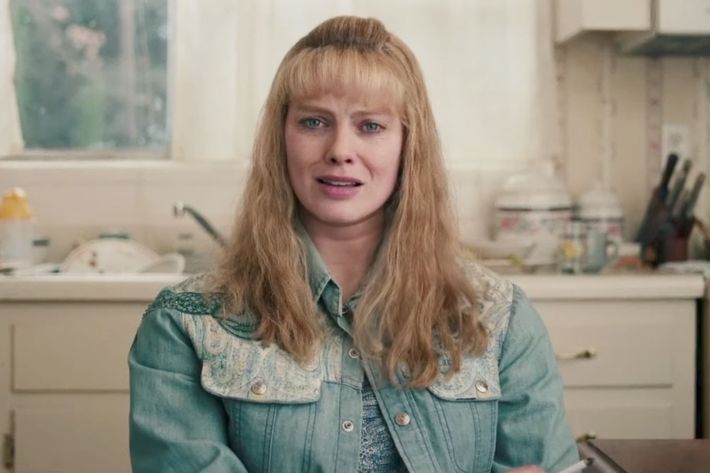
To truly become Tonya Harding, one must first sound like Tonya Harding. So to master the Oregon-born Harding’s flat Pacific Northwest accent, Robbie worked with voice coach Liz Himelstein — who also coached Robbie on Harding’s vocal timbre at her different ages throughout the film.
“We were doing a scene and Liz poked her head in: ‘Bring your octave down a little bit.’ I’m like, ‘What is she talking about? You sound good,’” remembers director Craig Gillespie. “And Margot was like, ‘My voice is a little higher when I’m 15 than when I’m 21 or 24, and much higher than when I’m 46.’”
The Face
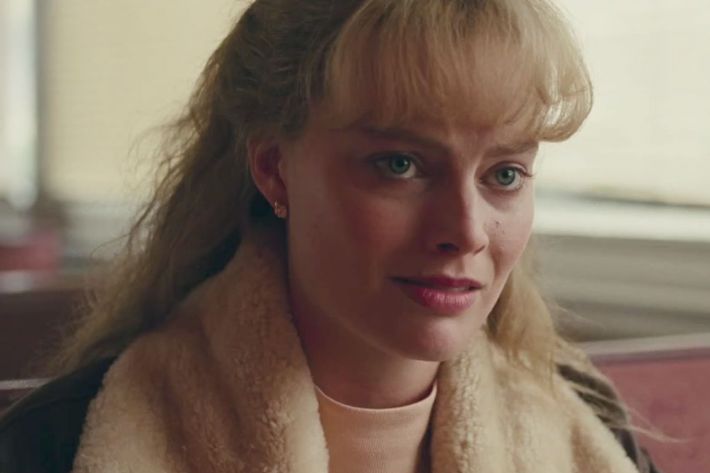
Robbie’s face, meanwhile, morphed into Harding’s with help from what I, Tonya makeup artist Deborah La Mia Denaver has called “reverse contouring” — light coloring on the cheeks and nose (as opposed to dark shading) to create a plumper face shape — and adhesive glue pulling the corners of her eyes downward to make them “less sparkly.” Gillespie says the makeup team also bleached Robbie’s eyebrows, and for scenes in which a 15-year-old Tonya wears braces, Robbie wore a plastic Invisalign-style retainer with braces on it.
Throughout the movie, a present-day Harding provides documentary-style commentary, and to play that Harding, Robbie was outfitted with prosthetics on her neck, nose, cheeks, torso, and even under her chin. (Gillespie says initially, somehow, there were even more prosthetics, that were later stripped away to avoid distraction.) Robbie was in full retired-Harding garb on the last day of filming, Gillespie remembers, and he and the crew shot her talking-head commentary scenes for 12 consecutive hours. “We ended up shooting a lot more of the interview than we ended up using, because I just didn’t know which pieces I would use,” Gillespie says. “Under that light, with the glue, I had to keep resetting prosthetics every hour.”
The Body
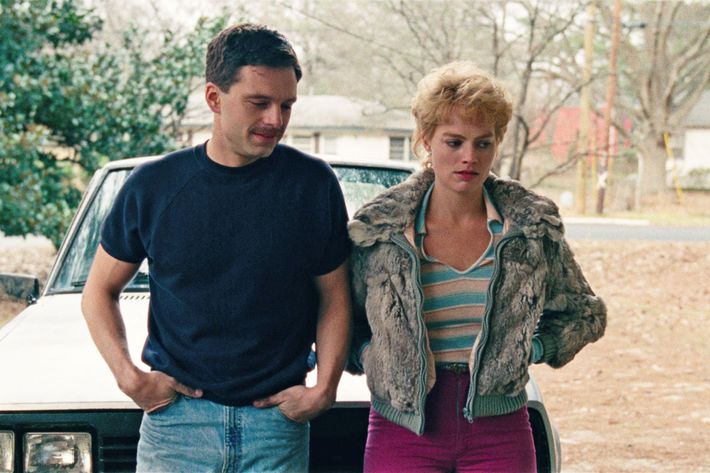
I, Tonya tracks Harding from her wiry up-and-comer teen years into her Olympian years, her second-act “lady boxer” years, and her late-40s retirement years. But a years-long Tom Hanks–Cast Away shoot this was not, so the duty of transforming Robbie’s body into multiple versions of Tonya Harding’s fell to a set of prosthetics. One brief sequence in the film implies Harding hit a rough patch in her skating career in 1992. “When she got to Albertville [for the Olympics], she was 15 pounds heavier, so she actually had a fat suit on for that,” Gillespie says.
Ice skating in a fat suit, it turns out, feels exactly how you think it would. “It changes your timing and makes you feel a little more sluggish,” I, Tonya skating coach Sarah Kawahara says. “You skate differently. Your reflexes aren’t quite as quick. Your jumps are harder.” Even though “it was only maybe a half an inch on the inside [of their thighs],” Kawahara says both of Robbie’s body doubles were alarmed at the feeling of so much excess weight between their legs while wearing it.
The Outfits
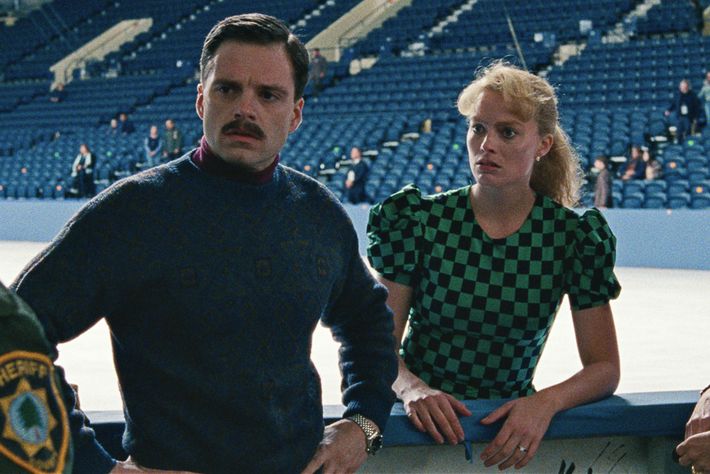
For the crew of I, Tonya, Harding’s vast and well-documented catalogue of looks became something of an obsession. Even before production began, “Every department had walls of photography and videos, and web pages of research,” Gillespie says. From little Tonya’s rabbit-fur coat to the older Harding’s leather bomber jacket, “They were amazingly loyal to what the reality was. They’re exactly what her outfits were. I kept telling them, it’s not a documentary! It doesn’t have to be that crazy color that she wore when the Feds were chasing her through the airport!”
The Moves
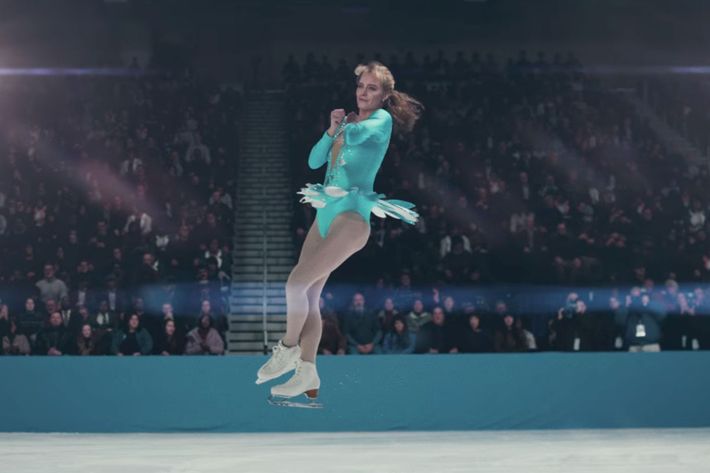
Before I, Tonya began filming, skating choreographer Sarah Kawahara made a promise to Gillespie: He’d be able to shoot considerable footage of Margot — and not just a stunt double — re-creating Tonya Harding’s storied 1994 skate to the music from Jurassic Park. “I said, ‘I will get her there. You will be able to shoot that first minute of that program on Margot,’” says Kawahara. Five months later, Gillespie shot the first minute of that program on Margot.
Before filming began, Kawahara and Robbie would meet in Los Angeles to do floor warm-ups and mirror work (in shoes, and then in skates), then transfer her moves to the ice. In total, she learned five routines with Kawahara, some a full minute long. Kawahara calls Robbie, a one-time hockey player, a “talented, talented sportswoman.” “I work with skaters all the time,” she says, “and it doesn’t always come so naturally as it did to her.”
“She’d text me and be like, ‘Hey, I’m on my outside edges.’ It had been two months,” Gillespie remembers.
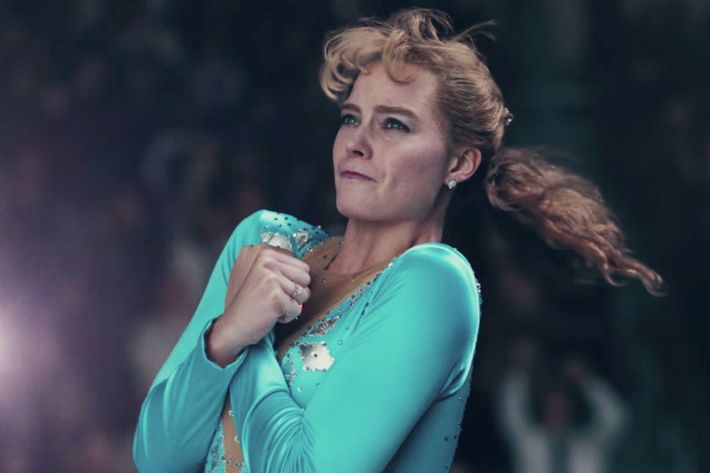
Surprisingly, Kawahara found, the hardest thing to teach a five-month student like Robbie was the confidence that comes from 20 years on the ice. “I was really into perfecting the casual stroke, where you skate out there [before you start the performance] and you don’t have your arms sticking straight out and your legs extended behind you with your feet pointed,” Kawahara says. “Skaters that skate all the time, it’s just like walking to them. We had to find that, which is easier said than done without looking stilted or jerky or stiff.”
Of course, playing a figure skater was one thing; playing Tonya Harding, a figure skater still vivid and prominent in the public imagination, was another. What Kawahara most wanted Robbie to nail was Harding’s posture: “She leans forward. She’s aggressive. She has an aggressive body language to her, and it’s very … I kind of call it a meat-and-potatoes approach,” she says. “There’s nothing frilly about her gestures. They’re very deliberate.”
For whatever Robbie couldn’t master, Kawahara was tasked with finding body doubles — which proved tricky, and not just because the five-foot-six Robbie is taller than most figure skaters. It was also a tough time to find athletes who could do jumps like the triple Lutz, Kawahara says, because the film would be shooting during the U.S. Figure Skating Championships. So Anna Malkova, who competes for France, and Heidi Munger, an alternate for the U.S. national team, ended up booking their first-ever film work in I, Tonya.
Still, there was the looming question of the triple axel, the signature jump that propelled Tonya Harding into the world figure-skating elite. “There’s truly only maybe five people in the whole world that do the triple axel successfully in a program. It’s just not a dime-a-dozen type of element,” Kawahara says. “We tried to do it through wire work, but it didn’t look real enough. We ended up doing a solid double axel, and doing it with editing.”
That Hair

The entirety of I, Tonya is an achievement in wigs: Julianne Nicholson’s snobby blonde bob swings placidly, Allison Janney’s sturdy bowl cut sits atop her head staunch and unperturbed. But Harding’s scarecrow-yellow mane is the film’s crown jewel.
“We needed to nail that late-’80s, early-’90s look, which was permed hair — I mean, really permed,” says hairstylist Adruitha Lee. “It went against everything a good hairdresser would want. But I knew what I had to do.”
What she had to do, in this case, included purchasing the same kind of at-home perms women used back in the ’80s and perming each of the film’s four Tonya wigs twice. She also made sure to use the same kind of drugstore-bought box colors women of the era used. “I had wigs sitting out in the driveway on blocks, drying after I’d permed them in the kitchen,” Lee says.
But the real secret to I, Tonya’s magnificently bad hair was an ingredient Lee says was the key to some ’70s hairstyles: beer.
“When you let beer go flat, you can set the hair in it and you get that real crispy crunch,” Lee laughs. And Harding’s hair, she says, “That hair was fried.”
A shoot that involves 236 scenes and 96 costume changes for its lead character necessarily requires a staggering number of styling decisions. But one in particular merited required special consideration: Whither Harding’s famous French braid, the single plait right down the middle?
Though it’s prominent in most popular renderings of Tonya Harding now, it appears in I, Tonya just once, in a pivotal scene at the 1994 Olympics.
“Margot and I talked about it a lot, and that particular scene, it has quite an impact. It totally exposes her. So the one French braid,” Lee says, “she just wanted it to be more special.”

